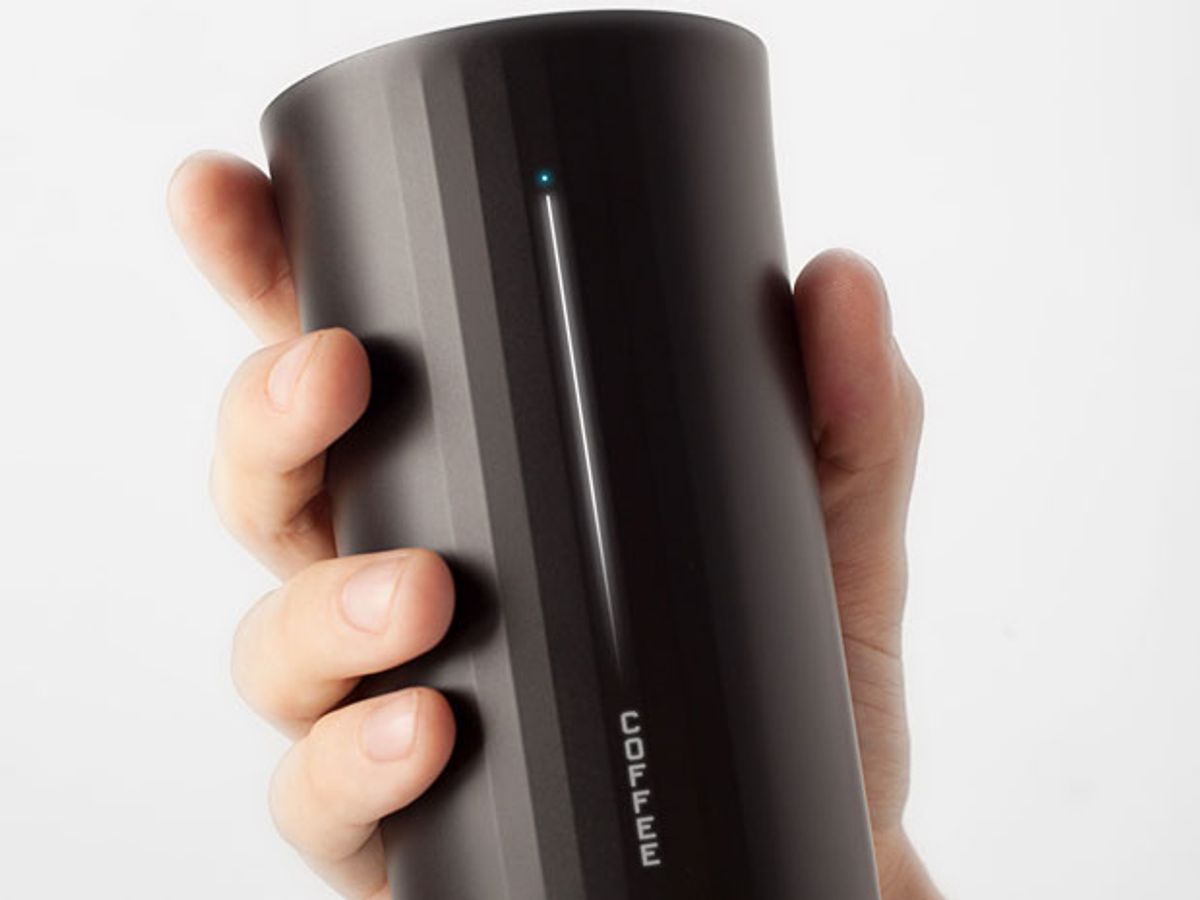Trust me, Mark One’s $200 drinking cup ($100 if you preorder), Vessyl, won’t be the next Fitbit. But if it works as its creator, Justin Lee, says it will, it’s pretty amazing. And it's a demonstration of the power and availability of low-cost sensors today.
The system involves a washable (but not dishwasher-safe) cup that can be used for hot or cold beverages. The cup contains proprietary sensors, a processor, memory, and a small display; it does some analysis and tracking onboard, but uses a bluetooth transmitter that can connect it to a smart device, where an app can perform more detailed analysis and tracking of beverage consumption. The cup charges on a pad that looks like a coaster; it takes 30 minutes for a charge that can last up to a week.
Lee, a biomedical computing graduate of Queen’s University, Kingston, Ont., has been working on his smart cup design for seven years, taking sensors from the food manufacturing industry and reducing them in cost and size.
“We built our sensors,” Lee said, “and they use a proprietary technique to analyze what’s inside the cup, even though they don’t come in contact with the substance.” He’s not saying specifically what he’s sensing, or how the app uses information from the cup to figure out characteristics about the beverage like calories, nutrients, and caffeine content, but it’s some combination of sensor data and profiling, that is, after the app identifies the liquid, it consults a database to get detailed nutritional information about it.
The system is sophisticated enough, Lee says, to distinguish between orange juice with pulp and juice without, to calculate how much sugar or cream you added to a drink, and to know the caffeine content of a cup of coffee (handy for folks trying to monitor caffeine content, as the caffeine in a cup of coffee can vary dramatically, even from the same vendor). The database, Lee reports, is extensive: the company recently added beet juice, Kombucha, and a lemon-ginger beverage.
The app will track calories, nutrients, and basic hydration using the user’s height, weight, and gender to calculate his needs. And it only tracks what you drink, not just what you put into the cup; it also knows the difference between water that you’re drinking and water that you’re using for washing.
Mark One has 17 employees right now, about half engineering, and recently settled into San Francisco’s South of Market area, a short walk from Pinterest and Dropbox, where, Lee reports, “there’s a lot of engineering talent; we’ve been able to build our team with some really phenomenal people out of Nike, Apple, and Google.”
Lee says preorders surpassed his initial goal of $50,000 in less than two hours. And, giving the company a further marketing boost, in July comedian Stephen Colbert skewered the gadget, pointing out that the only real use he could identify was telling the difference between Diet and Regular coke in a restaurant. Getting on Colbert, even as the butt of a joke, can only help.
Tekla S. Perry is a senior editor at IEEE Spectrum. Based in Palo Alto, Calif., she's been covering the people, companies, and technology that make Silicon Valley a special place for more than 40 years. An IEEE member, she holds a bachelor's degree in journalism from Michigan State University.



